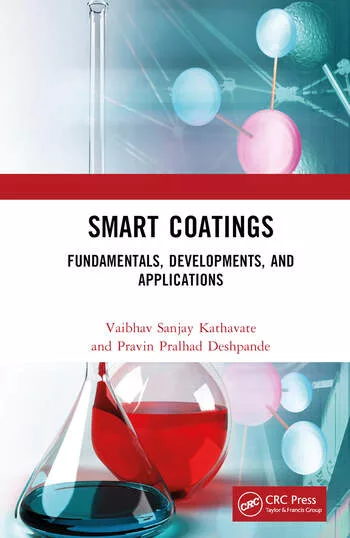Solid-State Viscometer


The BiODE ViSmart sensor system (see Figures 1 and 2) can measure viscosity from 0 to 100,000 cP ranges (can measure higher ranges and is material-dependent) with ±1% repeatability, in operating temperature environments of -20 ºC to 135 ºC. The ViSmart sensor has no moving parts, uses semiconductor technology and is housed in a hermetically sealed, four-ounce package. The ViSmart sensor measures temperature at the same time, hence relieving the customer of providing a separate temperature-measurement device.

Principle of Operation
The coatings industry is familiar with kinematic viscosity (centistokes) and dynamic or absolute viscosity (centipoise), which are related as centistokes = centipoise/specific gravity. BiODE's instrument introduces a third class of viscosity, called acoustic viscosity. Acoustic viscosity has units of centipoise 2 specific gravity. Knowledge of the specific gravity allows conversion between these three units at a fixed shear rate and temperature.This method of measuring viscosity employs a shear acoustic wave resonator in contact with the liquid. The viscosity of the liquid determines how thick a layer of fluid is hydrodynamically coupled to the surface. The loading of the acoustic resonator caused by this viscously entrained liquid is determined by the thickness and density of the entrained film. The response of an acoustic viscometer is thus proportional to the product of the viscosity, the density and the radian frequency of the vibration (kg2/m4) in the limit of low frequencies.
The acoustic wave resonator supports a standing wave through its thickness. The wave pattern interacts with electrodes on the lower surface (sealed from the liquid) and interacts with the fluid on the upper surface. The bulk of the liquid is unaffected by the acoustic signal, and a thin layer (on the order of microns or micro-inches) is moved by the vibrating surface (the vibration amplitudes are on the order of a single atomic spacing).
The instrument can be immersed in a fluid and can also accept a droplet sample as little as 100 micro-liters. The overall dimensions of the BiODE sensor are approximately 1.3 in 2 1.1 in 2 0.3 in (smaller than a matchbook). BiODE's system is inherently network-enabled (including provisions for wireless data transfer) and allows data analysis on a system other than the computer physically connected to the sensor. BiODE's system is readily extensible to distributed process control or to field-portable measurements. The display of measurement information is immediate and continuous and is a marked improvement over current technology (see Table 1).

In-Process Measurements
Most existing in-line viscometers are large and bulky, and response is slow and inaccurate while many units have difficulty measuring fluids with high or variable shear rates. They also present challenges in cleaning and operating, and most only provide analog outputs and are, therefore, difficult to interface to modern process-control equipment, which accepts more flexible digital inputs.The benefits of BiODE's digital design is that it is inherently much smaller, faster, more durable and reliable, much lower cost, and more scaleable than existing products. Its design is more flexible than existing systems, and easier to connect to a wide selection of process-control devices because it outputs digital rather than analog signals.
For in-process measurements, the ViSmart can be mounted directly in the reactor tank for batch applications, or in the pipe for in-stream applications (see Figure 3, for one example of embedded flowcell installation) in multiple customer-specific custom options.

For plant-wide scalability, up to eight ViSmart sensors can be connected to the industrial plant control hub product, ViscNet™, which can deliver outputs (4-20 mA, TCP/IP, etc.) for integration and control of solenoid valves and pumps.

Applications
Recently, a customer in the automotive coatings industry evaluated this viscometer as part of its product quality procedures. Data was taken continuously and is shown in Figure 4 in acoustic viscosity units (cP 2 specific gravity). The data for toluene indicates an artifact of employing mineral oils as the calibration standard for a high-shear-rate (30,000 - 3,000,000 for the various liquids tested) viscometer. Mineral oil begins to exhibit shear thinning at these shear rates and the degree of thinning that the standards exhibit is biased into the calibration functions. Materials that exhibit more shear thinning than mineral oils read lower than their expected "low shear" viscosity, while materials like water, iso-propanol and aromatics tend to exhibit less shear thinning than oils and read higher than expected. Mineral oil is employed as the standard due to the low reactivity, high stability and ability to measure from -40 °C to +140 °C over the required viscosity range with a single family of chemicals.
Later, an in-process test was conducted to observe the response of the instrument to a cool-heat cycle for the foaming resin. As seen in Figure 6, the data indicates solvent loss and/or polymerization with increasing time, demonstrating that the ViSmart can adequately monitor the change in the resin characteristics as a function of temperature.

The ViSmart on-board electronics and communication protocols provide the necessary interface for integration to OEM product platforms such as dispensing, pumping and coating station equipment, allowing the equipment manufacturers to provide value-added features of viscosity monitoring and control.
For another customer in the coatings industry who desired to verify that this system has the accuracy to detect different dilution concentrations and perform tasks as a QC tool at installation, a test was performed with a glycerin-water mixture. Data was taken, starting with 50 ml of glycerin, to which 50 ml of water was added (Figure 8). A series of 10 ml water additions were made down to a 25% final concentration. An aliquot was removed and mixed with 20 ml of glycerin. This solution was added to verify scale stability. The terminal value at 32% is seen to fall directly between the values for 31% and 33% on the downward slope.

Bissonette installed the sensor at the point where the coating is drawn from the barrel (Figure 10). Viscosity and temperature data are provided in real-time to a laptop computer, which he monitors without having to take manual samples. BiODE customized the software to provide the data in a format that Bissonette required.

For more information, contact Kerem Durdag at durdag@biode.com.
Looking for a reprint of this article?
From high-res PDFs to custom plaques, order your copy today!





